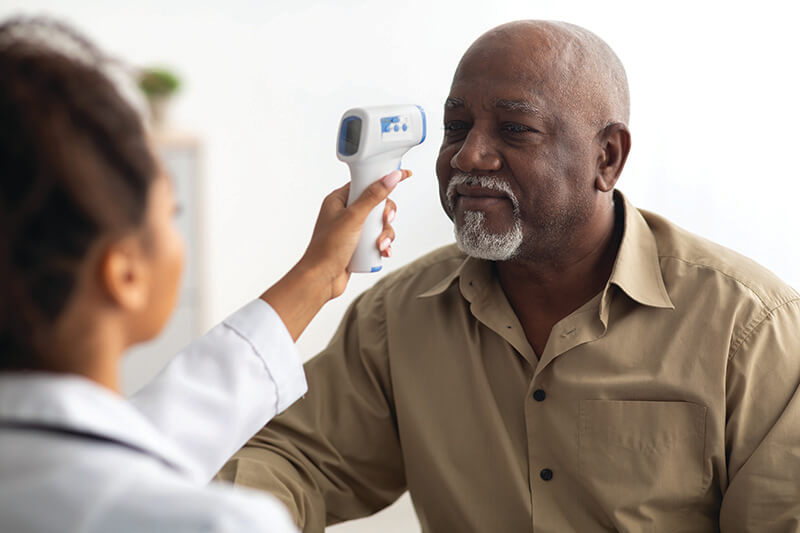
The use of continuous temperature monitoring in staff and older residents of independent and assisted living facilities may be an effective intervention for early detection and containment of infectious disease outbreaks. It may also provide better outcomes for people in those facilities, according to a study conducted by scientists at Wake Forest University School of Medicine.
“As we saw during the early days of the COVID pandemic, nursing homes and other congregate living facilities were often hotspots of infection due to the residents’ advanced age, chronic medical conditions and frailty, as well as inherent infection risks associated with congregate living,” said the study’s lead author, Eric Kirkendall, MD, MBI, deputy director of the Center for Healthcare Innovation at Wake Forest University School of Medicine.
“Also, fever in older adults can be more difficult to detect due to increased variations in their baseline temperatures than in younger people, so our team thought that continuous monitoring might be a way to detect individual or widespread outbreaks earlier.”
The researchers found that a wearable device that continuously monitored temperature in an older adult population and the staff in congregate living facilities was feasible and acceptable. This approach identified fever undetected by current standard of care indicating the potential capability of this device for earlier detection of fevers.
A significant and unexpected finding was the device identified fevers in 4 participants that usual care did not. This key finding demonstrates the value of continuous monitoring, especially in this high-risk population, Dr. Kirkendall said.
The study findings were published online in the Journal of the American Medical Directors Association.
